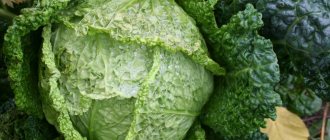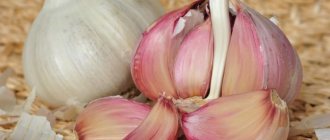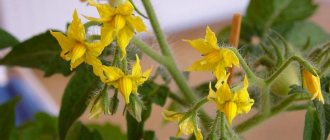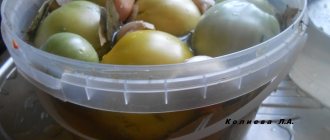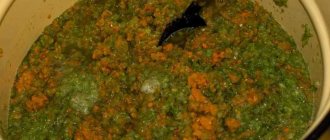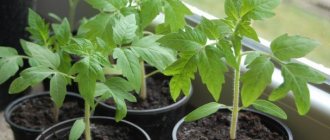In many regions of our country, climatic conditions do not allow some varieties of tomatoes to ripen naturally. With the onset of cold weather, green fruits remain on the bushes. Therefore, many summer residents are interested in how to speed up the process of crop ripening.
In some cases, tomatoes are grown in greenhouses or even on a windowsill. In this case, it is important to familiarize yourself with the peculiarities of growing vegetables. How to speed up the ripening of tomatoes at home will be discussed in the article. So let's get started.
What affects the ripening of tomatoes?
In some cases, ripening tomatoes at home on a windowsill is the only way out if weather conditions worsen. There are several ways to speed up this process.
The process of tomato ripening is affected by ambient temperature. In a warm room they will turn red much faster. If it gets cold outside and the tomatoes have not yet ripened, it is better to collect them and place them in a warm room. In this case, they will ripen without communication with the bush.
Please note that the ripening process is not affected by sunlight. Many summer residents could observe a picture when the tomatoes on the windowsill began to turn red on the side opposite the window. In a place where the sun's rays actively affect the fruit, the skin will thicken.
How to speed up the ripening of green tomatoes at home
Depending on climate and weather conditions, up to 60% of tomatoes may be unripe. These tomatoes are sent for ripening. We will tell you how to do it correctly to get as many ripe fruits as possible.
If cool and rainy weather prevails in August, it is better not to wait for the tomatoes to ripen on the bush: with high humidity, late blight can destroy them. To save the harvest, green tomatoes need to be collected and ripened.
Based on color, there are 3 stages of tomato ripeness:
- Green.
- Blanzhevye. During this period, tomatoes also often turn light green or yellowish-brown.
- Pink, red or yellow (depending on the variety). These tomatoes are considered ripe.
It is important to know exactly when to pick green tomatoes. If the fruits are still green, but have already reached the size corresponding to the variety, and fully developed seeds are visible on the cut, then such tomatoes can be sent for ripening. Small and poorly developed fruits should be left on the plant: at home they will not ripen on their own.
Regardless of the degree of ripeness, all diseased tomatoes are not left to ripen. They are destroyed so that the disease does not spread to healthy fruits.
Tomatoes can be harvested while still green, but they must be of normal size for the variety.
So, both green and blue fruits can ripen at home. But how to determine the time when it is time to pick tomatoes for ripening?
The entire crop must be removed from the bushes before the air temperature at night drops below 5°C. In the middle zone this usually happens in the second half of August. Please note: frozen tomatoes do not store well and run the risk of disease.
When to pick tomatoes in a greenhouse for ripening
All tomatoes grown in greenhouses are recommended to be picked from the bush slightly unripe (light brown). This will allow the remaining green tomatoes to ripen faster.
The exact time when you need to pick tomatoes for ripening depends on the period of planting the seedlings and the variety of vegetable. As a rule, the first harvest of greenhouse tomatoes is harvested in early June, and the fruits of late-ripening varieties are removed from the bush at the end of September. But you need to take weather conditions into account.
Artificial ways
When considering methods for ripening tomatoes at home, a few words should be said about the use of ethylene. The gas of this substance is used commercially for ripening not only tomatoes. It is used to give bananas and apples a marketable appearance.
Ethylene gas causes fruits to ripen faster. However, the taste of such products leaves much to be desired. Fruits and vegetables processed this way have a grassy taste. They were picked ahead of time, so they did not have time to fully absorb all the nutrients provided by nature. In this case, the nutritional value of the fruit is reduced.
There are several ways to speed up the ripening of tomatoes without losing their taste. Experienced summer residents actively use them if the weather is not conducive to the natural reddening of tomatoes in the garden. Their recommendations will help make this process faster.
How to slow down the ripening of tomatoes at home
- In this case, tomatoes should be picked only when they are green, but when they reach the size corresponding to the variety.
- Keep boxes with fruits in a well-ventilated area and away from light.
- The temperature for completely green fruits is about 12 degrees, for brown ones - about 6 degrees, and for pink ones - even less, about 2 degrees.
- You need to sort and select ripe tomatoes often and regularly.
- In the room where the fruits lie, you should monitor the humidity, it should not be higher than 85%, too low humidity is also bad, the fruits will simply dry out.
If the tomato harvest did not have time to ripen on the vine, there is no need to be upset. Some tomatoes can be processed, while the rest can be ripened if they are provided with the appropriate conditions. Ripe tomatoes are not much different in taste and beneficial properties from those that are ripe on the vine. Well, greenhouse tomatoes cannot compare with them.
Selected medium and large-sized tomatoes are laid out in 2-3 layers in containers, for example, in boxes or baskets. To avoid condensation, the tomatoes are covered with soft paper or sprinkled with sawdust. Reddened tomatoes are selected, spoiled ones are removed. To do this, containers with tomatoes are regularly inspected.
Bush processing
Ripening green tomatoes at home can occur directly on the bush or picked. The first option is preferable. If you managed to save the entire bush and move it indoors, you can perform a number of manipulations that speed up the process of reddening of the fruit.
First, all new shoots, stepsons and other shoots that are not needed at the moment are removed. They will not have time to ripen, but will take away the precious forces of culture. You should also remove all new inflorescences.
Next, all the leaves that are located at the bottom of the branches with fruits are removed from the plant. Next, you should properly tie the plant. The remaining leaves will need to be turned towards the sunlight. They should not be in the shade. The straightened leaves will receive enough light. The plant will develop fully.
How to store green tomatoes so they turn red at home
Most of our country is in the zone of risky agriculture. Warm-loving crops such as peppers, eggplants and tomatoes rarely produce a full harvest of ripe fruits. Usually you have to remove unripe and sometimes completely green tomatoes. Experienced gardeners recommend picking fruits at ripeness, without waiting for complete redness, so that the plants have more strength for further fruiting. A special case is the mass disease of tomatoes with late blight. A harmful mushroom can destroy a crop in a matter of days. Tomatoes collected from such bushes will most likely get sick.
Interesting: Dry or freeze basil for the winter
Bait and prevention
To speed up the maturation of plants in the soil, many summer residents use bait made from a solution of iodine and water. Treatment is carried out outside the roots. You can carry out the procedure 1-2 times. Fertilizing is carried out on the leaves. To do this, you need to dissolve 30 drops of iodine in 10 liters of water.
Groundbait can speed up the ripening process of healthy fruits. However, this will not help if the tomato is affected by late blight. Ripening tomatoes at home is only possible for healthy plants. All affected fruits must be removed. There should be good air circulation in the room. The plant should not remain wet for a long time.
To prevent the development of mold on the bushes, an infusion of garlic is used. Leaves and fruits are sprayed with it. The procedure is carried out on a sunny, warm day. Treatment will prevent the development of late blight on plants.
How to properly pick green tomatoes
Before moving on to the question of how to turn green tomatoes red, it is worth paying attention to one more aspect. It is important not only to follow the rules for selecting tomatoes for harvesting, but also to correctly separate them from the bush.
This is what is recommended:
- Pick tomatoes as they ripen, checking the bushes every three to five days. You should not delay this, since overripe tomatoes are not suitable for long-term storage, they are only suitable for direct consumption;
- Collection is best done in the morning in dry weather. The fruit should be removed together with the stalk, cutting it with sharp scissors. When harvesting, it is important not to accidentally cut the skin, as this can lead to subsequent rotting, which will destroy not only the damaged tomato, but also those in the immediate vicinity;
- After harvesting, be sure to sort through the fruits again and check for damage and disease. Even a small scratch and foulbrood should be rejected;
- To prevent the formation of late blight, it is recommended to immerse already selected fruits in hot water for a few minutes, then wipe thoroughly. High temperature will help destroy spores of pathogenic fungus that could get on the skin.
If it was not possible to harvest before the first frost, such fruits are suitable only for immediate consumption; they are not suitable for ripening and storage.
Tomatoes are harvested selectively as they ripen. This is usually done every 4-5 days, during the period of mass fruiting - approximately every 3 days. It is advisable not to delay harvesting: this increases the likelihood of losses and leads to overripe fruits. It is best to remove tomatoes in the morning, before they get hot in the sun, and sort them in a cool room or at least in the shade.
We invite you to read: How to plant and grow a Kostroma tomato
You need to pick tomatoes carefully, trying not to damage the skin: any mechanical damage reduces the shelf life of the fruit and can cause rot and mold, which will then spread to healthy fruits. After harvesting, the tomatoes are sorted by ripeness and carefully inspected for signs of disease.
If at the time of harvest there are slight signs of late blight on the unripe fruits, they can be saved: to do this, the tomatoes are placed in a net or colander and dipped in water heated to 60°C for 1–2 minutes, then wiped dry. But it is best to immediately use such tomatoes for processing.
Tomatoes collected at the stage of full ripeness must be used in the next two to three days, but green and blanc tomatoes require storage. To ensure that the harvest ripens and does not spoil, follow several important rules during storage.
- For ripening, choose a dark and dry place. It should not be too warm (no higher than 23°C), but must be well ventilated.
- To extend the ripening period of milky ripeness tomatoes, wrap each fruit in newspaper or a napkin, place in one layer and place in a cool place.
- It is better to store the collected fruits by sprinkling them with dry peat or sawdust. This way, if one tomato rots, the disease will not spread to neighboring plants.
- If you pick fruits in cool weather, you need to warm them up before storing them. To do this, the crop is kept for a couple of minutes in hot (about 60 ° C) water, and then thoroughly wiped and dried. This procedure prevents the appearance of blackness on tomatoes.
- To speed up the ripening of green tomatoes, add a few ripe fruits to the box. Such tomatoes emit ethylene gas, which stimulates the ripening process. If you want to delay the process, carefully select only green specimens for storage and regularly remove reddened fruits.
- To save space, you can place tomatoes in boxes in several layers, but no more than three.
Rules for storing healthy tomato fruits:
- Selected tomatoes are placed in containers, preferably wooden ones, such as box-trays no more than 10-18 cm high; the fruits are distributed in 2-3 layers; the bottom row is placed with the stalk down, the middle row is placed sideways, and the top row is placed with the stalk up; with this arrangement, the stalks will not be able to injure neighboring vegetables;
- Each row is layered with sheets of newspaper or moisture-absorbing paper (napkins, paper towels);
- The room must have good ventilation; humid air causes the rapid spread of fungal diseases;
- Tomatoes are stored without access to light; cover with burlap, old bedspreads, reed mats, etc.
High humidity in autumn causes increased proliferation of fungal diseases, mostly late blight. If tomato bushes in the open ground are affected by late blight, then those removed for ripening or storage also carry harmful spores.
To protect tomatoes from late blight when storing them, you need to immerse them in hot water (60°C) for 1-3 minutes, quickly remove them, carefully wipe or dry them without damaging the skin. Some gardeners place tomatoes in a perforated container or sieve and water them with hot water for several minutes.
Nutrient restriction
When studying ways to ripen tomatoes at home, one more effective method should be noted. It comes down to limiting the flow and flow of nutrients to the fruit. This will significantly speed up the ripening process.
At a distance of 10 cm from the ground, a through cut must be made in the stem of the plant. A small wooden plate is inserted into it. It has a flat shape. The plate size should be 5x20 mm. In this case, the supply of nutrients to the fruit does not completely stop, and their outflow noticeably slows down.
At the same height, you can tighten the stem using copper wire. It is not wound very tightly. This method will also limit the outflow of nutrients from the plant.
You can also simply pull a little on a bush that grows in the ground. When the sound of thin roots breaking off is felt, it is released. This creates an effect similar to previous methods.
Ripening of picked tomatoes
When considering ways to speed up the ripening of tomatoes at home, you should pay attention to the ripening of fruits when picked. If it is not possible to preserve the bush, you can collect brown, green tomatoes. Next, the crop should be carefully sorted. Sick, damaged fruits are immediately put aside.
Next, all healthy fruits are laid out in a warm, well-ventilated room. It is unacceptable to store tomatoes wet. They must be completely dry. It is very important to ensure the correct temperature in the room.
Experienced summer residents claim that tomatoes can be distributed into batches. Each of them is stored at different temperatures. In this case, the ripening time will be different for all batches of the crop. If you leave tomatoes to ripen at a temperature of 11-16ºС, the fruits will be ready to eat after a month. If the room temperature is increased to 17-20ºС, the tomatoes will turn red within 2 weeks. You cannot leave the crop at a temperature of 10ºC or lower. Their taste will be worse. Some fruits will never ripen.
Secrets of ripening tomatoes at home
When growing tomatoes outside, harvesting is carried out when most of the tomatoes are still fairly unripe. This is explained by a lack of heat and sun: in most regions of Russia, summer passes quickly, and frosts begin in early autumn. Ripening must be done according to certain rules, otherwise the taste of the fruit will be spoiled.
Why do they carry out
When ripening (ripening), the tomato reaches its maturity. Its taste properties change in a positive direction, the color of the skin becomes red, and the flesh becomes juicy and sweet. Ripening is a necessary stage in growing tomatoes, since unripe fruits cannot be eaten. They are tasteless and, moreover, will cause poisoning of the body.
The process is most often carried out at home. Optimal conditions for tomatoes are created under which they begin to change. Ripe tomatoes are no different in taste and color from their predecessors, which were ripened on bushes in a greenhouse. They are used for any purpose: canned, cut into salads, salted, pickled, prepared tomato juices and paste.
When and how to collect
Green tomatoes are found not only in open ground, but also in greenhouses. Harvesting depends on the ripening period of the variety.
If a tomato variety is characterized by a late harvest of fruits, then they should be collected no earlier than August. The main point is that unripe tomatoes must be collected before frost begins.
At low night temperatures (below zero), the taste begins to deteriorate, and the fruit itself begins to rot.
When harvested, tomatoes should reach their size, which is characteristic of the variety; a slight blush may appear on the skin. The fruits are torn off with the stalk and placed in rows in a basket or wooden box. Since the flesh of green tomatoes is quite hard, you don’t have to worry about damaging the skin.
Important!
Fruit collection is carried out in dry cloudy weather in the evening or in the morning.
If a tomato bush is infected with late blight, rot or other fungal diseases or viruses, then it is not advisable to collect the tomatoes growing on it. There is a high probability that a diseased tomato will infect a healthy one, and as a result, the entire crop will be ruined.
However, if there is a small affected area on the fruit, then before storage it must be scalded with boiling water or placed in hot water at 60-70 degrees. Infections die at high temperatures, and the tomato will be safe and can be eaten.
How to speed up ripening and its methods
The collected green vegetables are brought into the house or a warm room and left to ripen. In this case, you need to pay attention to several points:
- Dryness of fruits. After harvesting, all tomatoes must be wiped dry; moisture should not get on the skin, as the fruits quickly deteriorate.
- Ambient temperature. The temperature should be in the range from 15 to 25 degrees. The warmer the house is, the faster the ripening proceeds.
- To speed up the process, add a red tomato to the ripening tomatoes. It causes redness in neighboring fruits due to the ethylene released.
Normal way
Tomatoes are poured into a cardboard box and placed in a dark but dry place at a temperature of 22-25 degrees Celsius. The top of the box is covered with a dark cloth. After 3-4 days, the tomatoes are turned over to the opposite side so that the color acquires a beautiful color. After 2 weeks, even completely green fruits will ripen and are ready to eat.
In the sun
To quickly get red and sweet tomatoes, place them in rows on a sunny windowsill. Ripening occurs very quickly, so vegetables are constantly monitored so that they do not overripe. If you continue to keep ripe vegetables in the sun, they become ugly, wrinkled, and some of the taste is lost. Usually a week is enough for all the tomatoes to reach the desired condition.
In the package
Green tomatoes are placed in a plastic bag, but the top of the bag is not closed so that there is constant air access. The package is hung from the top of a curtain, a horizontal bar, or to any support. The tomatoes are left hanging for several days, every week the harvest is checked and the already ripe fruits are removed.
Further storage
Ripe vegetables are stored in a cool place. This could be a refrigerator or a basement. During storage, tomatoes should be without visible damage. Place the harvest in a bag without tying it and put it in the refrigerator. The shelf life of ripe tomatoes is no more than 2 weeks. It is not advisable to store vegetables at room temperature; they spoil in 2-3 days.
How to stop ripening
Some gardeners, on the contrary, want to extend the ripening period of tomatoes until autumn. This will allow you to enjoy ripe fruits even at the beginning of winter. To stop ripening, vegetables are stored in a cool place with a temperature of no more than 15 degrees Celsius.
The ideal storage space is a cellar, basement, attic. The tomatoes are placed in boxes or crates, covered loosely with lids and several ventilation holes are made in it. The boxes or boxes are put into the basement, where the vegetables will be stored for several weeks.
Attention!
It is necessary to monitor the humidity in the room so that it is not high and the fruits remain dry.
Instead of boxes, you can put the tomatoes in plastic bags and hang them from the ceiling of the cellar. A low temperature will stop ripening, however, it does not contribute to its complete cessation; it proceeds with low intensity.
Sometimes tomato bushes are dug out of a greenhouse or open ground directly with the rhizome and suspended by the root from the ceiling, without separating the tomatoes from the branches. The tomatoes will sing right on the bush, because the stem continues to supply the fruit with the necessary nutrients for some time.
If the technology for collecting and storing fruits is violated, the harvest can be completely ruined. Ripening is considered a natural procedure and does not harm the quality of tomatoes, but only improves the taste characteristics.
Subscribe to our channel in Yandex.Zen! Click “Subscribe to channel” to read Otomatah.ru in the Yandex feed
Source: https://otomatah.ru/dozarivanie.html
A few simple techniques
Tomato ripening at home can be done in a cardboard box. To do this, you need to cover the bottom with paper bags, newspapers or other similar material. Cellophane should not be used for such purposes. Next, a layer of fruit is laid out on newspapers. There should be a small space between the tomatoes. The top of the fruit is covered with another layer of newspaper. Ventilate tomatoes regularly.
You can use crates instead of cardboard boxes. If you have wooden containers available, this will be a good option for organizing the conditions for ripening tomatoes.
You can leave the tomatoes to ripen in a glass jar or plastic bag. This method is used less frequently than the methods presented above. The presented materials do not allow air to pass through. They will have to be ventilated frequently. Otherwise, the tomatoes will begin to become moldy and rot.
How to speed up ripening and its methods
The collected green vegetables are brought into the house or a warm room and left to ripen. In this case, you need to pay attention to several points:
- Dryness of fruits. After harvesting, all tomatoes must be wiped dry; moisture should not get on the skin, as the fruits quickly deteriorate.
- Ambient temperature. The temperature should be in the range from 15 to 25 degrees. The warmer the house is, the faster the ripening proceeds.
- To speed up the process, add a red tomato to the ripening tomatoes. It causes redness in neighboring fruits due to the ethylene released.
Normal way
Tomatoes are poured into a cardboard box and placed in a dark but dry place at a temperature of 22-25 degrees Celsius. The top of the box is covered with a dark cloth. After 3-4 days, the tomatoes are turned over to the opposite side so that the color acquires a beautiful color. After 2 weeks, even completely green fruits will ripen and are ready to eat.
To quickly get red and sweet tomatoes, place them in rows on a sunny windowsill. Ripening occurs very quickly, so vegetables are constantly monitored so that they do not overripe. If you continue to keep ripe vegetables in the sun, they become ugly, wrinkled, and some of the taste is lost. Usually a week is enough for all the tomatoes to reach the desired condition.
Green tomatoes are placed in a plastic bag, but the top of the bag is not closed so that there is constant air access. The package is hung from the top of a curtain, a horizontal bar, or to any support. The tomatoes are left hanging for several days, every week the harvest is checked and the already ripe fruits are removed.
Non-standard methods
Ripening tomatoes at home can be more effective. To do this, you need to add just one fully ripened fruit to a bag of green tomatoes. In this case, his brothers will turn red much faster. The culprit is ethylene released by ripe tomatoes. It acts as a catalyst.
You can store tomatoes in a paper bag. In addition to tomatoes, you should keep ripe apples and bananas in it. No more than 10 tomatoes should be placed in one paper package. Several ripe fruits are added inside and left in a warm room. The package is periodically opened to avoid the appearance of fungus and rotting. In this case, the principle of ripening will be completely identical to the previous method. Bananas and apples also emit ethylene.
You can inject vodka directly into the fetus. 0.5 ml of alcoholic drink is drawn into the syringe. Next, it is introduced through the place where the fruit was attached to the stem. The fruit will be red after 2 weeks. Its taste does not change when using an alcohol injection.
How to stop ripening
Some gardeners, on the contrary, want to extend the ripening period of tomatoes until autumn. This will allow you to enjoy ripe fruits even at the beginning of winter. To stop ripening, vegetables are stored in a cool place with a temperature of no more than 15 degrees Celsius. The ideal storage space is a cellar, basement, attic. The tomatoes are placed in boxes or crates, covered loosely with lids and several ventilation holes are made in it. The boxes or boxes are put into the basement, where the vegetables will be stored for several weeks.
It is necessary to monitor the humidity in the room so that it is not high and the fruits remain dry.
Instead of boxes, you can put the tomatoes in plastic bags and hang them from the ceiling of the cellar. A low temperature will stop ripening, however, it does not contribute to its complete cessation; it proceeds with low intensity.
Sometimes tomato bushes are dug out of a greenhouse or open ground directly with the rhizome and suspended by the root from the ceiling, without separating the tomatoes from the branches. The tomatoes will sing right on the bush, because the stem continues to supply the fruit with the necessary nutrients for some time.
If the technology for collecting and storing fruits is violated, the harvest can be completely ruined. Ripening is considered a natural procedure and does not harm the quality of tomatoes, but only improves the taste characteristics.
Tomatoes are poured into a cardboard box and placed in a dark but dry place at a temperature of 22-25 degrees Celsius. The top of the box is covered with a dark cloth. After 3-4 days, the tomatoes are turned over to the opposite side so that the color acquires a beautiful color. After 2 weeks, even completely green fruits will ripen and are ready to eat.
Hanging
Another way to ripen tomatoes is by hanging the bushes. If the weather forecast promises cold weather, you can use this technique.
Plants are torn out of the ground along with their roots. Next, all the bushes are taken to the barn or garage. Here you need to tighten the rope. The bushes are tied to it by the roots. In this case, the ripening of the tomatoes will be fast, and the taste of the fruit will remain at its best. This method is preferable among the methods listed above. If you have to pick green tomatoes, it is better to remove them from the garden along with the bush.
Having considered the methods of ripening tomatoes at home, you can choose the best option.



